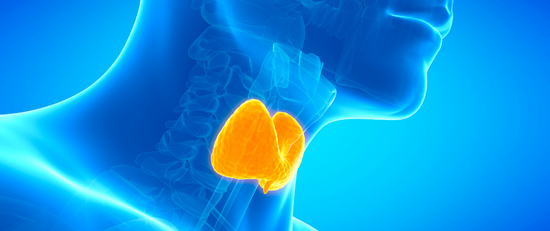Is PEA the Natural Pain Reliever You've Been Searching For?
By Dr. Kevin Passero
Frequent pain can impact nearly every aspect of your physical and mental health.
And while there are many remedies available that may supply some degree of temporary relief, for many, finding a lasting solution – especially one without unwanted side effects – has proven to be frustratingly elusive.
In my 20+ years of helping patients address inflammation and pain issues, I’ve found several specific nutrients to provide effective and longest-lasting pain relief.
The most widely-known and used of these nutrients is turmeric. The turmeric plant’s bright-yellow roots contain an extraordinarily powerful compound called curcumin that has the unique ability to block inflammatory enzymes that can trigger swelling, pain and stiffness.**
In recent years I’ve found that turmeric works best with my patients when combined with a lesser-known fatty acid – palmitoylethanolamide. Quite a mouthful I know, which is why it’s called PEA for short.
In this article, I will unpack the science and facts surrounding PEA, its role in pain management, and why it has become such an important part of the pain relief protocol I recommend for my patients.
What Is PEA?
PEA is a fatty-acid derivative our bodies produce in response to inflammation-inducing damage that helps downregulate pain. But prolonged periods of inflammation deplete our body’s natural PEA stores, which is why replenishing with supplemental PEA can provide powerful relief from pain. Multiple gold-standard clinical studies have established the validity of PEA as a powerful natural pain reliever.
One landmark study at the University of Rome involved 610 patients with persistent pain. Most had suffered for six months or more—and many had for years.
Participants were accepted into this study no matter what the source of their problem: joint issues… nerve-related problems… back problems… headaches… surgery after-effects… skin issues… and persistent aches and pains triggered by all kinds of conditions.
By the end of the study, PEA “significantly decreased” the severity and intensity of pain for those taking it. And just as important, it worked no matter the source of their pain.*
In a separate hospital study, 407 patients with widespread aches and tenderness that wouldn’t go away received 600 mg of PEA daily. Of those, a full 88% reported “significant” score improvements for comfort and quality of life.*
The Science Behind PEA's Pain-Relieving Abilities
Pain is a complex and subjective experience, but at its root, it is a product of signaling in the nervous system. PEA is believed to operate through several interweaving pathways.
One significant action is PEA's ability to regulate mast cell activation, which can play a role in neurogenic inflammation, a hallmark of many pain conditions. PEA has shown the capability to reduce mast cell activation, suppressing inflammation and alleviating pain.
In addition, PEA's interactions with endocannabinoid signaling are crucial. It operates on the same receptors activated by compounds like CBD (cannabidiol). These receptors modulate the release of inflammatory mediators and are part of the body's natural pain management system.
How Long Does It Take to Feel the Effects of PEA?
The timing of effect for PEA can vary depending on factors such as individual physiology, the severity of pain, and the form of the supplement used.
Addressing frequent pain requires consistent use of PEA to build up therapeutic levels in the body. Based on the clinical studies of PEA and my experience with patients at my clinics, you can expect to start to feel a reduction in discomfort after about two weeks of daily usage and feel significantly less pain within 30 days.
What Is the Recommended Dosage of PEA?
Determining the right dosage of PEA is crucial in optimizing its therapeutic benefits. Available supplements can vary widely in the amount of PEA contained in each daily serving. The dosage most-commonly used in scientific research showing the effectiveness of PEA is 600 mg taken daily for at least 30 days. That is the dosage of PEA I use in the pain relief protocol I recommend for my patients.
The Lowdown on Side Effects: Is PEA Safe?
One of the most significant advantages of PEA as a long-term pain reliever is its safety profile. Users typically experience few, if any, side effects.
Why Combining PEA and Turmeric is So Effective for Pain Relief
I developed my pain relief protocol to target all of the common pain triggers throughout the body – most supplements target just one.
Multiple research studies show that PEA helps neutralize COX-2, iNOS and TNFα, the notorious trio of factors associated with inflammation and pain.*
But turmeric has some unique characteristics that attack pain and inflammation throughout the body using different mechanisms of action than PEA.
Key studies have found that turmeric blocks inflammatory pathways and reduces levels of the pro-inflammatory cytokines, effectively preventing the launch of a protein that triggers swelling and pain.*
I have found that combining PEA with turmeric provides the most-effective long-lasting pain relief.
So, to make it easy for my patients and anyone else suffering from frequent pain, I have combined research base doses of PEA and turmeric, along with ginger, which research shows enhances the effectiveness of turmeric by blocking the activity of the pro-inflammatory 5-LOX enzyme, into a convenient “triple action” natural pain relief solution called Durable PAIN RELIEF®.
To learn more about how Durable PAIN RELIEF can provide the pain relief you have been searching for, click here.




